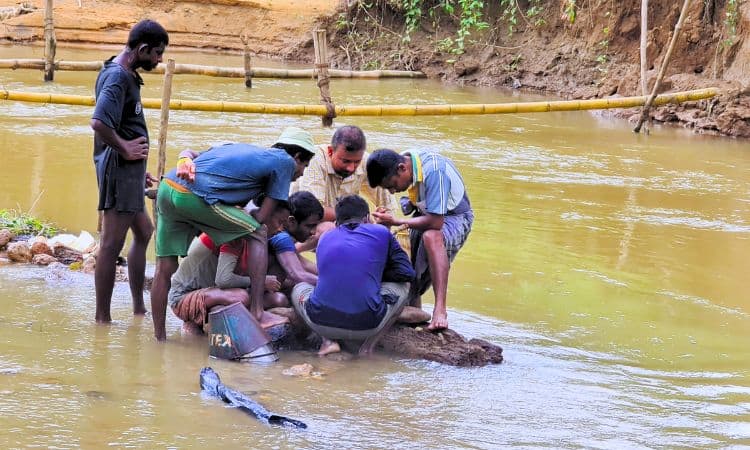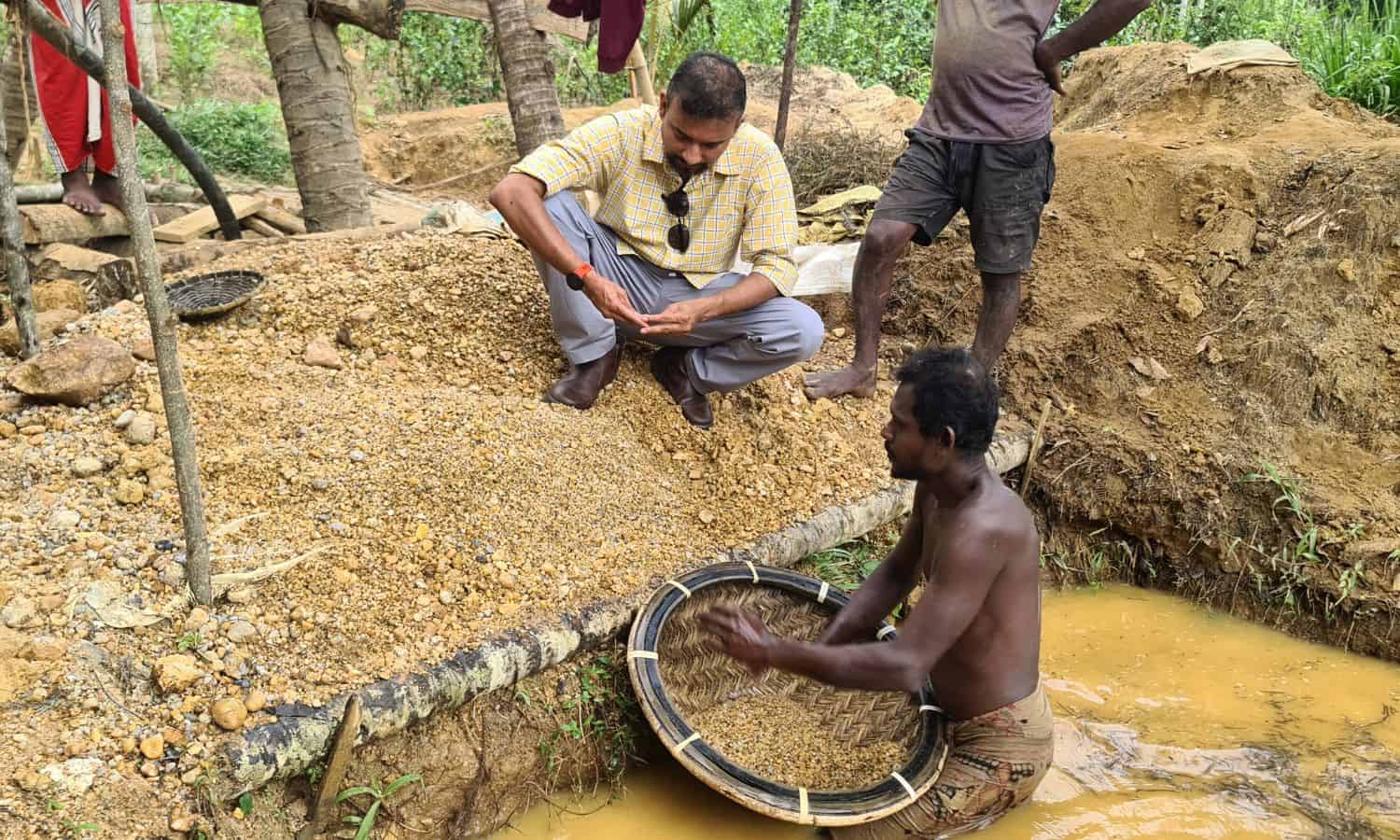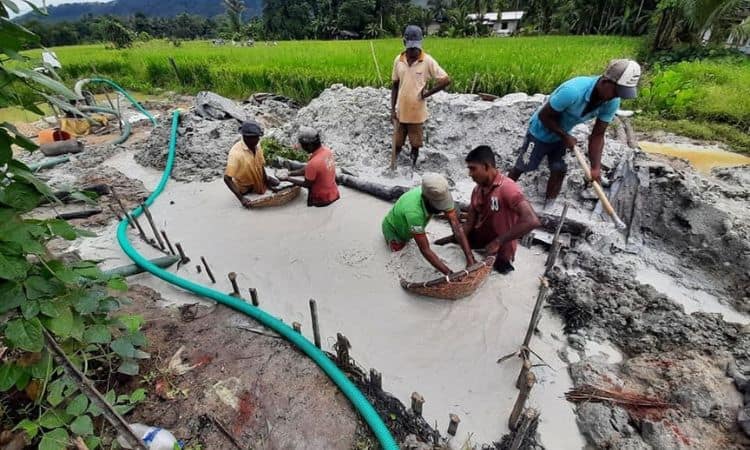Gem Mining on the River in Sri Lanka: The Gem Island’s Legacy
Gem Mining on the River – Sri Lanka’s Sparkling Legacy
Known as Ratna-Dweepa, or “Gem Island,” Sri Lanka’s reputation as a world-class source of precious stones is centuries old. Nestled in the heart of the Indian Ocean, the island boasts a rich geological history and a unique tradition of gem mining—especially along its rivers and alluvial plains. This ancient craft continues to shape the island’s cultural identity and drive its jewelry industry, making Sri Lanka a true gem in the global market.

sapphire mining in sri lanka in a river
The Rich Geological Heritage of Sri Lanka
Sri Lanka’s extraordinary gemstone wealth can be traced back to its unique geology. The island sits atop the Highland Complex, a region dominated by high-grade metamorphic rocks formed millions of years ago. Over time, these rocks weathered, releasing minerals into rivers and alluvial plains, where they accumulated as rich gemstone deposits.
- Central Highlands: The central region is the primary source of gemstones, featuring ancient metamorphic rocks.
- Alluvial Plains: Rivers and floodplains carry and concentrate gem-bearing gravels, making them hotspots for mining.
- Diverse Minerals: The variety of minerals found here includes sapphires, topazes, amethysts, garnets, spinels, and more.
Why Sri Lanka is Called the Gem Island
The moniker Ratna-Dweepa is not mere hyperbole. For centuries, travelers and merchants have been captivated by the abundance and quality of Sri Lankan gems. Even Marco Polo famously wrote that Sri Lanka had “the best sapphires, topazes, and amethysts in the world.” Today, the country remains a global leader in colored gemstones, renowned for its vibrant Ceylon sapphires and ethical mining practices.
The Gem Mining Process: From Riverbeds to Radiance
Gem mining in Sri Lanka is a blend of age-old tradition and natural ingenuity. The most distinctive method is alluvial river mining, where miners search for gemstones in riverbeds and floodplains. Here’s how the process unfolds:
1. Locating Gem-Bearing Deposits
Miners identify promising spots along rivers where centuries of erosion have deposited gravels rich in gem minerals. These sites are chosen based on local knowledge, geological surveys, and a keen understanding of river dynamics.
2. Excavating and Sifting
- Excavation: Workers dig pits along the riverbanks or directly in the riverbed, extracting layers of soil and gravel, known as illam (gem-bearing gravel).
- Sifting: The gravel is washed and agitated in large wicker baskets or metal sieves, allowing lighter materials to wash away and heavier, denser gems to settle at the bottom.
3. Washing and Sorting
After sifting, the concentrate is carefully inspected. Experienced miners use their trained eyes to pick out rough gemstones, which are then sorted and categorized by type and quality.
4. Enduring Harsh Conditions
River mining is physically demanding. Miners often work in extreme heat, muddy waters, and challenging terrain. Despite these harsh conditions, the tradition is passed down through generations, with entire communities involved in the process.

sapphire mining in sri lanka
Types of Gemstones Mined from Sri Lankan Rivers
Sri Lanka’s rivers are famed for yielding a dazzling array of gemstones. The most notable include:
- Sapphires (Ceylon Sapphires): Renowned for their vibrant blues, but also found in pink, yellow, and other hues.
- Topaz: Prized for its clarity and range of colors.
- Amethyst: A purple variety of quartz, often used in fine jewelry.
- Spinel: Available in red, pink, and blue shades.
- Garnet, Zircon, Moonstone: Each with unique optical properties and appeal.
Traditional vs. Modern Mining Methods
While some mechanization has occurred, much of Sri Lanka’s river gem mining is still conducted using primitive, environmentally conscious methods:
- Manual Labor: Most work is done by hand, preserving the surrounding ecosystem.
- Minimal Machinery: Basic tools like spades, sieves, and baskets are standard.
- Eco-Friendly Practices: After mining, pits are commonly refilled and land is restored.
From Mine to Market: The Gemstone Journey
One of Sri Lanka’s standout features is its mine-to-market industry. This means gems are not only mined locally, but also cut, polished, and traded within the country, ensuring strict quality control and ethical standards throughout the supply chain.
- Cutting and Polishing: Skilled artisans transform rough stones into sparkling gems.
- Trading Hubs: Cities like Ratnapura and Colombo are bustling centers for gemstone trade, attracting buyers from around the world.
- Global Export: Sri Lankan gemstones find their way into high-end jewelry markets, prized for their beauty and provenance.
The Economic and Cultural Impact of Gem Mining
The gem industry is a cornerstone of Sri Lanka’s economy, supporting thousands of families and contributing significantly to export revenue. Beyond economics, gem mining is deeply woven into the island’s cultural fabric:
- Community Livelihoods: Entire towns, such as Ratnapura (meaning “City of Gems”), rely on mining for sustenance.
- Traditional Knowledge: Techniques and wisdom are passed down through generations.
- Cultural Celebrations: Gemstones play a central role in local festivals, rituals, and even marriage customs.
Challenges Facing the Industry
Despite its glimmering legacy, the industry faces several challenges:
- Environmental Concerns: Over-mining and improper restoration can impact local ecosystems.
- Regulatory Pressures: Stricter regulations are being introduced to ensure sustainability and ethical practices.
- Market Fluctuations: Global demand and prices for colored gemstones can be volatile.
- Working Conditions: Many miners still endure tough, unsafe conditions and limited economic security.
Fortunately, increased awareness and government initiatives are encouraging more sustainable, fair-trade practices, ensuring a brighter future for both miners and the environment.
Why Choose Sri Lankan Gems?
For jewelry enthusiasts and collectors, Sri Lankan gems offer several unique advantages:
- Heritage: A centuries-old tradition of excellence and authenticity.
- Quality: Superior clarity, color, and brilliance—especially for sapphires.
- Ethical Sourcing: Many mines follow eco-friendly and socially responsible practices.
- Traceability: The mine-to-market system provides greater transparency for buyers.
Tips for Visitors: Experiencing Gem Mining in Sri Lanka
If you’re planning a trip to Sri Lanka, visiting a gem mine can be a highlight. Here’s how to do it:
- Visit Ratnapura: The heart of the gem mining industry, with guided tours available.
- Watch the Process: See firsthand how gems are extracted, washed, and sorted.
- Learn from Locals: Engage with miners and artisans to understand the craft’s nuances.
- Buy Responsibly: Purchase gems from reputable, licensed dealers who can verify origin and authenticity.
Conclusion: Sri Lanka’s Gems—A Shining Legacy
From the winding rivers and lush alluvial plains to the bustling markets of Ratnapura and Colombo, gem mining in Sri Lanka is more than just an industry—it’s a living legacy. The island’s commitment to tradition, quality, and ethical practices ensures that its jewels will continue to dazzle the world for generations to come. Whether you’re a jewelry connoisseur, history buff, or traveler, Sri Lanka’s sparkling story offers a unique glimpse into the heart of a true Gem Island.
References:
- Historical accounts and observations by Marco Polo
- Geological studies on Sri Lanka’s Highland Complex
- Industry reports on mine-to-market gemstone practices
- Sri Lankan government mining and export statistics



Comments (0)
Write your review